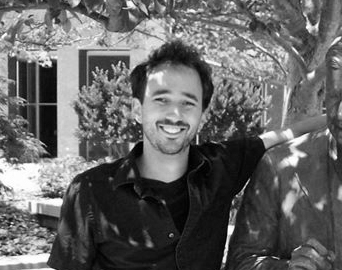
A few weeks ago, I was walking with a friend down a very crowded street when a man launched into telling her how beautiful she looked. She visibly tensed, grabbed my arm, and hurried our walk to our destination. Since I occasionally use this column to make confessions, here is a big one: I didn’t really get it.
Despite years of formal education dedicated to Women, Gender, and Sexuality Studies, a dossier littered with social justice trainings, and an extensive contact list comprised of some of the brightest feminist minds (though I admit my bias)—I didn’t really get it.
I share this because I think it is really important to acknowledge our own blind spots when we encounter them. To my knowledge, I have only been the target of street harassment twice in my life. One time, a man in Richmond, VA yelled something violent and sexually charged at me as I walked past him. The other time, a man in Cambridge, MA hurled comments at me about my gender presentation for a solid thirty seconds. Both instances occurred in broad daylight with others around—and each left me feeling unsafe and embarrassed.
So now back to the scene of my confession: Why did that man’s compliment trigger in my friend the same reaction that I felt under far less complimentary conditions? She is, after all, very beautiful. I didn’t really get it. I didn’t get that it is not entirely about the message—it is the method, the exertion of power and control, the invasion, the entitled sense that they have a right to consume you. It is hostile, and it is threatening.
Afterward, I spoke separately to several friends about the experience. One after another, they showered me with stories of their own countless encounters with street harassment. I came to realize that this is something with which many people deal on a daily basis. Many people alter their routes to avoid known harassers, navigate public spaces on “high alert,” and scan the faces of passersby attempting to ascertain whether or not anyone in the immediate vicinity poses a threat to their safety and (what is left of) their sense of security. I remember well the sour pang of danger as it hit the bottom of my empty stomach and sent my heart racing in the moments after my own encounters with street harassment. What could I do? I am dumbfounded that, for so many women, this experience is a regular occurrence. What can we do?
A few years ago, a friend invited me to try a new app: Hollaback! The point is summed up best, I think, in the closing line of the app description: “Don’t just walk on… Hollaback!” The app invites folks who experience street harassment to document the who/what/when/where of the harassment. If you feel safe (and so-inclined), there is even the option to upload a photo of the harasser. The app offers eight harassment “tags” to help to categorize the harassment: assault, groping, homophobic, racist, stalking, transphobic, verbal, and “other.” Once you have documented the incident, your story will become a pin on the map of that city, joining the too many other pins littering its streets. From there, folks can click on your pin and read about your encounter with street harassment.
I think that these maps are really powerful ways to make this issue more real for individuals who do not have much experience with street harassment. Interacting with the pin-littered map of your city, street harassment is no longer just something that happens to some people—it is something that happens outside of your favorite coffee shop, down a block from your pharmacy, or outside of your bedroom window. Each pin provides a testimony to what occurred in that place, and taken together, their voices create a chorus, and suddenly, a new, troubling topography emerges.
According to their 2013 “State of the Streets” report, Hollaback is gaining global ground in 71 cities and 24 countries. Their website lists the current figures at 79 cities and 26 countries. In mid-October, they launched their “Survey on Street Harassment” which they hope will provide data and information about the global fabric of street harassment and its impacts. The survey is published in over a dozen languages.
What is the big deal? Well, to get some idea, I would invite you to check out the Research page on the Hollaback website:
According to the CDC “non-contact unwanted sexual experiences,” including street harassment, are the most prevalent form of sexual violence for both men and women in the United States. Internationally, studies show that between 70-99% of women experience street harassment at some point during their lives. Comments from “You’d look good on me” to groping, flashing and assault are a daily, global reality for women and LGBTQ individuals, but street harassment is rarely reported, and culturally accepted as ‘the price you pay’ for being a woman or for being gay. The long-term impacts include depression, anxiety, and post-traumatic stress disorder, as well as a reduced sense of safety that can limit earnings, decrease mobility, and interrupt their ability to fully engage with civic life.
In short, street harassment is happening a lot and most of us are doing nothing about it despite the fact that it can have enormous implications for those who are subjected to it. Folks, this is a really big deal. I am not sure how else to convey the gravity it.
Street harassment, though often occurring in public with others around, is intensely isolating. Organizations like Hollaback provide communities of other pins, other stories, other people with whom to gather in response. With the goal of ending street harassment altogether, Hollaback needs our support. I would ask you to circulate the link to their survey, to share their app with your friends, to “make a personal pledge to be a better bystander,” and to work to bring the app to your city if yours is not among its participants.
Maybe, like me, you didn’t quite get it before you started looking at the data and listening to the stories. Consider this your invitation to continue looking and listening, to wrestle with the maps, and to begin to consider all of the ways that you can contribute to ending street harassment.



